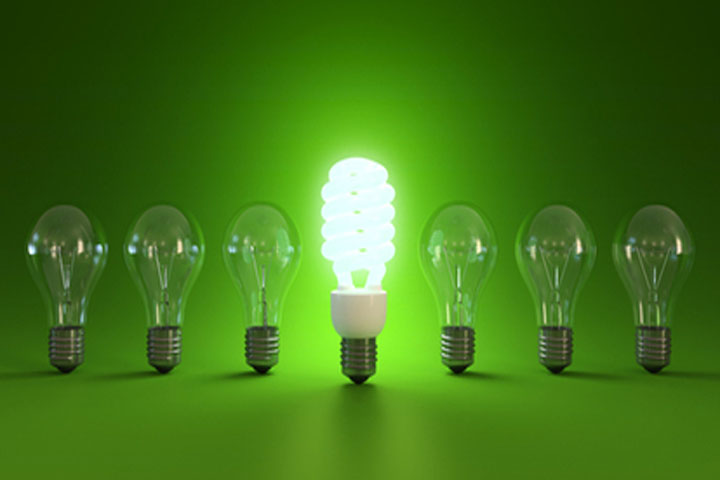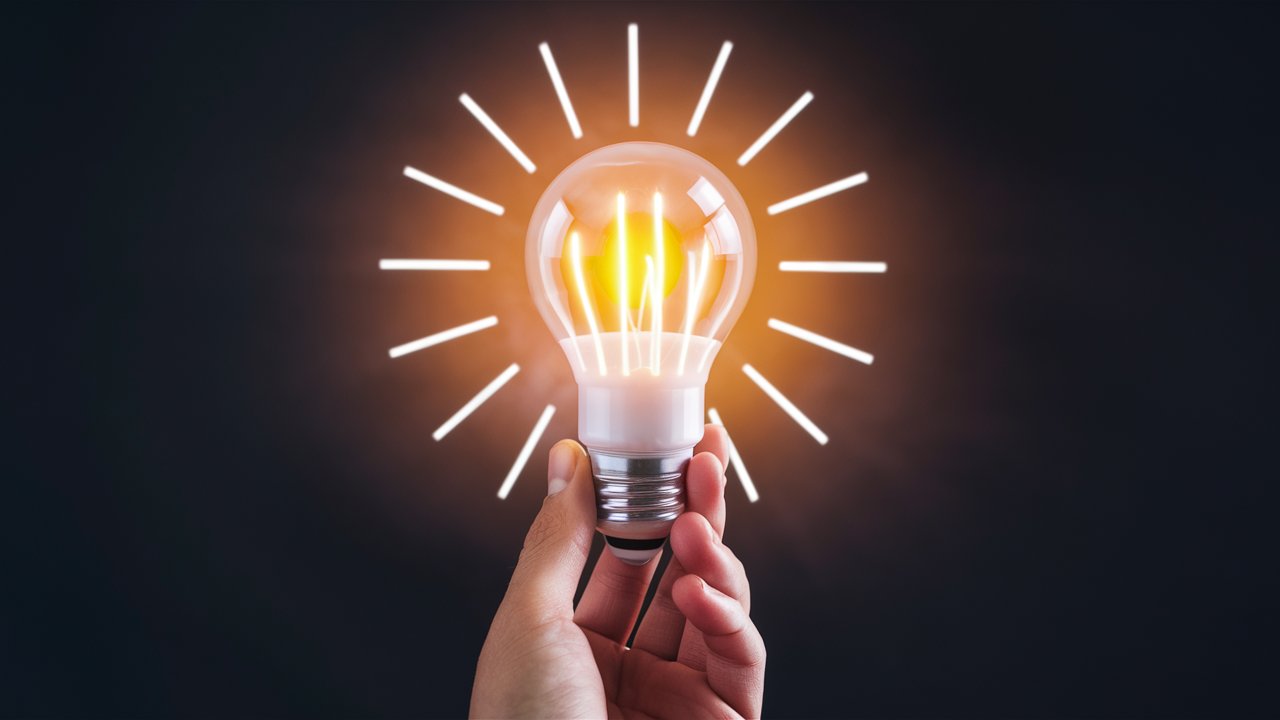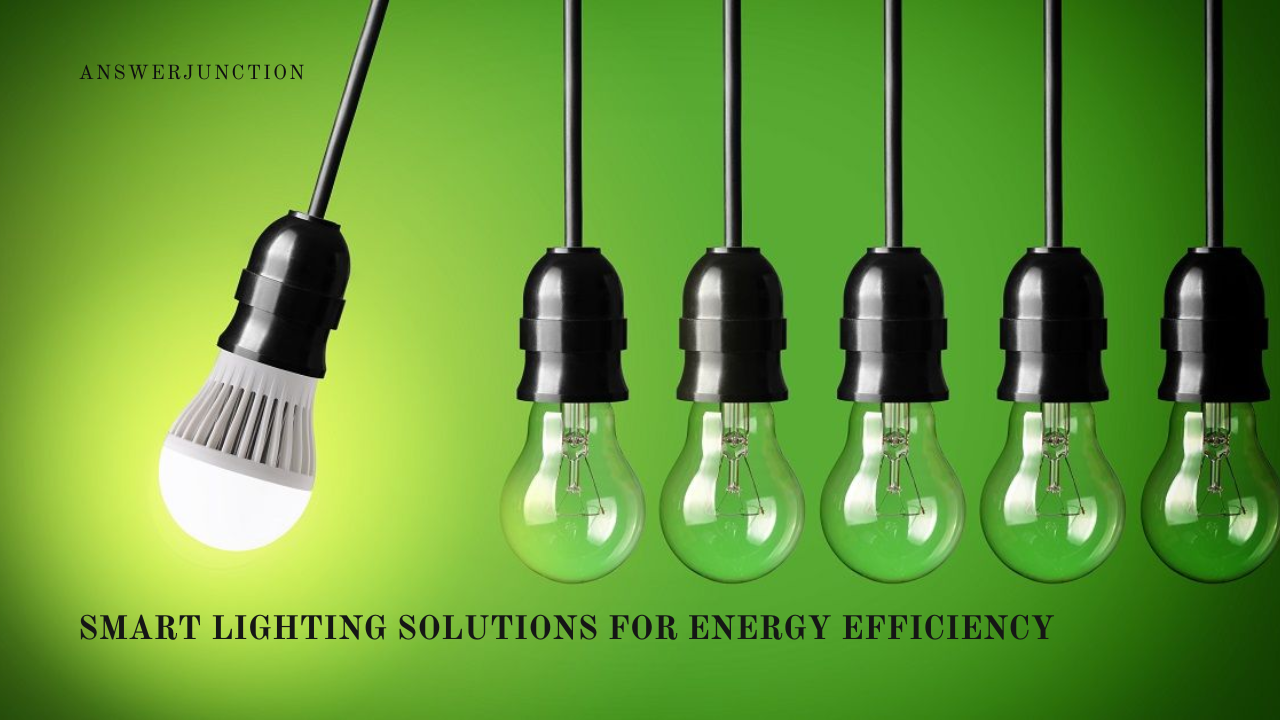The shift towards smart technology has revolutionized nearly every aspect of modern life, and one of the most significant areas of change is in the realm of lighting. Smart lighting solutions are more than just a trend; they are a practical, energy-efficient approach to illuminating spaces in ways that benefit both homeowners and businesses. These systems allow for customizable lighting, automation, and integration with other smart devices, helping users save on electricity bills and reduce their environmental impact. In this comprehensive guide, we’ll explore the benefits of smart lighting, the technology behind it, and how these solutions can significantly enhance energy efficiency in various settings.
The Importance of Energy Efficiency in Lighting

Before delving into specific smart lighting solutions, it’s essential to understand why energy-efficient lighting matters. Lighting accounts for a significant portion of energy usage in residential and commercial buildings. Traditional incandescent bulbs, for instance, are notorious for their inefficiency, converting only about 10% of the energy they use into visible light while the rest is dissipated as heat. This inefficiency not only wastes energy but also drives up energy costs and contributes to greenhouse gas emissions.
Transitioning to energy-efficient lighting systems can reduce energy usage by as much as 75% in some cases. Smart lighting solutions go beyond merely using LED bulbs; they integrate technology like motion sensors, dimming capabilities, and automation, further optimizing energy use. As more people become aware of the need for sustainability, smart lighting systems have become a critical component of energy-saving initiatives in both households and businesses.
Understanding Smart Lighting Technology
At its core, smart lighting involves connecting lighting fixtures to a network, allowing users to control them remotely through a smartphone app, voice commands, or an integrated automation system. A few of the most popular smart lighting systems, such as Philips Hue, LIFX, and Sengled, offer various options for wireless connectivity, including Wi-Fi, Bluetooth, and Zigbee. This connectivity enables the lights to respond to different triggers, such as occupancy, time of day, or natural light levels, ensuring that energy is used only when necessary.
One of the significant advantages of smart lighting systems is their ability to integrate with other smart devices, such as thermostats, security systems, and even entertainment setups. This integration creates a seamless ecosystem where lighting adjusts automatically to various environmental cues or routines set by the user. For instance, when the thermostat lowers the temperature in the evening, the lights could also dim to create a cosier ambience while reducing energy consumption.
Benefits of Smart Lighting for Energy Efficiency
- Reduced Energy Consumption
Traditional lighting systems consume energy continuously when turned on, regardless of occupancy. In contrast, smart lighting systems use sensors to detect motion or presence, turning lights on only when needed. This occupancy-based lighting dramatically reduces unnecessary power usage, which is particularly beneficial in commercial spaces where lights in hallways, meeting rooms, and bathrooms are often left on inadvertently. - Enhanced Control with Dimming and Customization
Dimmable smart lights allow users to adjust brightness levels based on the time of day or activity in the room. For example, during the daytime, lights can be set to a lower brightness or turned off entirely if there’s enough natural light. Similarly, task lighting for activities like reading or working can be customized to specific brightness levels, ensuring comfort while saving energy. Users can also program specific lighting scenes, such as a “Movie Night” or “Dinner Ambience,” that adjust light levels to preset intensities, minimizing the need for maximum brightness at all times. - Scheduling and Automation
Smart lighting allows users to set schedules for their lights, ensuring they turn on and off at specific times. Scheduling is especially useful for outdoor and landscape lighting, which can be programmed to turn on at sunset and off at sunrise. Automated lighting eliminates the need for manual switching, ensuring energy savings by preventing lights from staying on longer than needed. - Adaptive Lighting for Seasonal Changes
Smart lighting systems can adapt to seasonal shifts in daylight hours, adjusting schedules accordingly. This adaptability is particularly helpful in colder months when daylight hours are shorter, and lighting needs increase. Many smart systems can adjust their brightness levels to maximize energy efficiency, offering more illumination during darker hours and reducing it as daylight becomes available.
Key Components of Smart Lighting Solutions
Smart lighting solutions come with various components that collectively enhance their energy-saving potential. The primary components include LED bulbs, smart switches, motion sensors, and a central control hub.
- LED Bulbs
LED technology itself is highly energy-efficient, consuming significantly less energy than incandescent or halogen bulbs. LEDs also have a much longer lifespan, reducing the frequency of replacements. Smart LEDs can be controlled remotely, offer dimming options, and change colours, making them versatile for various settings. - Smart Switches and Dimmers
Installing smart switches and dimmers allows users to control traditional bulbs within a smart lighting system. These devices add flexibility, enabling users to automate lighting even if they don’t want to replace all bulbs with smart ones. Smart switches and dimmers are particularly valuable in homes where a mix of smart and traditional lighting is used, as they offer centralized control. - Motion and Occupancy Sensors
Motion sensors are essential for reducing energy waste in areas with intermittent traffic, such as hallways, bathrooms, and stairwells. When paired with smart lighting, these sensors can turn lights on only when movement is detected, ensuring that lights remain off when spaces are unoccupied. Occupancy sensors are also effective in commercial settings, such as offices and conference rooms, where energy wastage can accumulate over time if lights are left on unnecessarily. - Central Control Hub
A smart hub connects all smart lighting components and allows for centralized control. Users can manage their lighting through a smartphone app or voice command through devices like Amazon Alexa or Google Assistant. The central control hub enables smooth integration with other smart systems, creating a unified experience that maximizes energy efficiency across various smart devices in the home or office.
Smart Lighting in Residential Settings

Homeowners are increasingly adopting smart lighting solutions to improve energy efficiency and convenience. One common application is automated lighting for bedrooms, living rooms, and bathrooms. With the use of motion sensors, lights can turn on only when someone enters the room, turning off automatically after a specified period of inactivity.
Another popular feature for residential spaces is the “away mode,” which randomly turns lights on and off to simulate occupancy when the house is empty. This not only improves security but also ensures that lights are used minimally while maintaining the illusion of occupancy.
Smart Lighting in Commercial and Industrial Settings
In commercial settings, smart lighting is a highly effective way to reduce overhead costs associated with electricity usage. Office buildings, for instance, can benefit from adaptive lighting, which adjusts based on natural light levels. By integrating lighting with building management systems, facility managers can optimize energy use across large office spaces, ensuring that lights are dimmed or turned off in unoccupied areas.
In manufacturing and industrial settings, the need for consistent, bright lighting is high, but energy costs can quickly become exorbitant. Smart lighting can alleviate these costs by automatically dimming lights in areas with less activity or during shift changes. Moreover, smart lighting in warehouses can be set to brighter levels in high-traffic areas and lower levels in storage sections, where consistent illumination may not be as necessary.
The Environmental Impact of Smart Lighting Solutions
Using smart lighting has a positive environmental impact by reducing electricity consumption and, consequently, greenhouse gas emissions. Energy production remains one of the largest contributors to global carbon emissions, so reducing energy demand directly supports sustainability goals. Additionally, since LEDs have a much longer lifespan than traditional bulbs, the demand for manufacturing and disposing of light bulbs decreases. This reduction in waste and energy demand contributes to a more sustainable, eco-friendly lifestyle, making smart lighting an excellent choice for environmentally conscious consumers.
Future Trends in Smart Lighting
As smart technology continues to evolve, the future of smart lighting holds exciting possibilities. One emerging trend is the use of artificial intelligence (AI) to further refine energy usage. AI-powered systems can analyze users’ habits, adjust lighting patterns for maximum efficiency, and even offer suggestions for reducing energy use. For example, AI systems could adjust lighting in real-time based on occupancy, weather conditions, and time of day, minimizing energy consumption without sacrificing comfort.
Another potential advancement is in the realm of integration with solar power systems. Solar-powered smart lights can store energy generated during the day and use it for lighting at night, reducing reliance on the grid. Coupling smart lighting with renewable energy sources further enhances the sustainability of these systems and provides a robust, eco-friendly lighting solution for the future.
Smart lighting solutions represent a powerful way to enhance energy efficiency in homes, businesses, and industries. With features like motion sensors, dimming capabilities, and scheduling, smart lighting systems ensure that energy is used only when necessary, significantly reducing electricity bills and environmental impact. As technology advances, the integration of AI and renewable energy sources will likely make smart lighting an even more compelling choice for those seeking sustainable and cost-effective lighting solutions. Embracing smart lighting is not only an investment in convenience and comfort but also a commitment to a greener, more energy-efficient future.




